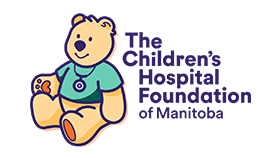Occupational Therapy
Occupational Therapy is a health profession that helps people of all ages lead a more productive, satisfying, and independent life. Fundamental to the practice of Occupational Therapy is the person’s occupations, which are defined as the tasks and activities that occupy their time and energy throughout the day. This can include things like getting dressed, preparing a meal, working at a job, playing, attending school, involvement in sports or music and enjoying time with family or friends. Occupational Therapy helps individuals perform the occupations they need to and want to do.
Working as part of the health care team, the Child Health Occupational Therapist (OT) considers the child’s occupations, abilities (physical, emotional, and cognitive), their environment and their specific needs and goals. An OT is an expert at analyzing the effects of the child’s environment and functional limitations on their ability to perform their day-to-day tasks and activities. Once an assessment has been completed, the OT works with the child and family to help them fulfill roles as a child, student, playmate, worker, or team member.
Inpatient care
Working collaboratively as part of the patient care unit teams, Child Health OTs are one of several disciplines that assist patients and families to successfully transition to the community as independently as possible. OTs also work closely with Rehabilitation Assistants and other support staff to support inpatient care.
Inpatient services provided by Child Health OTs include:
- Rehabilitation, habilitation, or maintenance of the child’s self-care, work, school, play or leisure skills related to acquired, developmental, chronic or acute conditions
- Assessment of the child’s physical, cognitive, perceptual-motor, socio-cultural and emotional capabilities related to their self-care, work/school/play, or leisure routines
- Pediatric client feeding and swallowing assessment and intervention
- Developmental assessment and intervention
- In-hospital assessments of physical, social and cultural environments
- Discharge planning/risk assessment
- Equipment and assistive devices prescription
- Skin and wound pressure management
- Acute wheelchair mobility and seating/positioning assessments and intervention
- Post-surgical or post-trauma wound care, splinting, casting and associated interventions
- Scar management and burn scar pressure garment intervention
- Referral to community support services
Areas served
- Medicine Units
- Surgery Units
- Neonatal Intensive Care Unit
- Oncology
- Pediatric Intensive Care Unit
- Pediatric Special Care Unit
Working together with families
Patients often come with a team of people important to them who have been and will in the future support them in their life journey. We consider these people part of our care team as well and may include them in assessment, interventions and planning.
There are times when OT staff may reach out to family members, essential care partners, health-care providers, or other caregivers to assist us to meet the care needs of our patients, and to gather more information about home environments and/or equipment or adaptations.
Sometimes, we need assistance obtaining very specific information such as pictures or measurements from the home environment that will help us in the planning we are doing with the patient. We may also request assistance with bringing in the patient’s clothing, toiletries or existing equipment to assist in our assessment and interventions.
At times we may be requesting a meeting with family or others to come on site and learn something new regarding caring for the patient, assist with the training for using equipment that may be required, or be part of the assessment and discussions.
Contact information
725 William Avenue
and
CH2-820 Sherbrook Street
- Monday – Friday: 8 a.m. to 4 p.m.
- Weekends and statutory holidays: On call between 8 a.m. to 4 p.m. only
Outpatient care
Outpatient services provided by Child Health OTs include:
- Short term rehabilitation, habilitation, or maintenance of the child’s self-care, work/school/play, or leisure skills related to acquired, developmental, chronic or acute conditions
- Assessment of the child’s physical, cognitive, perceptual-motor, socio-cultural and emotional capabilities related to their self-care, work/school/play, or leisure routines
- Post-surgical or post-trauma wound care, splinting, casting and associated interventions
- Scar management and burn scar pressure garment intervention
- Equipment & assistive devices prescription
- Referral to community partners
Populations served
- Plastic surgery and burns
- Orthopedics
- Rheumatology
- JIA
- Oncology
- Inpatient to outpatient short-term feeding follow-up
Referral process
Outpatient OT services can be initiated by:
- Written order to “Consult Occupational Therapy” on the physician order sheets (Form #1352, titled: Consultation Form)
- Team initiated referral
- Written Consult sheet
- Physician letter
- Details regarding client’s condition and reason for referral are always required
Contact information
CH2-820 Sherbrook Street
- Monday – Friday: 8 a.m. to 4 p.m.



